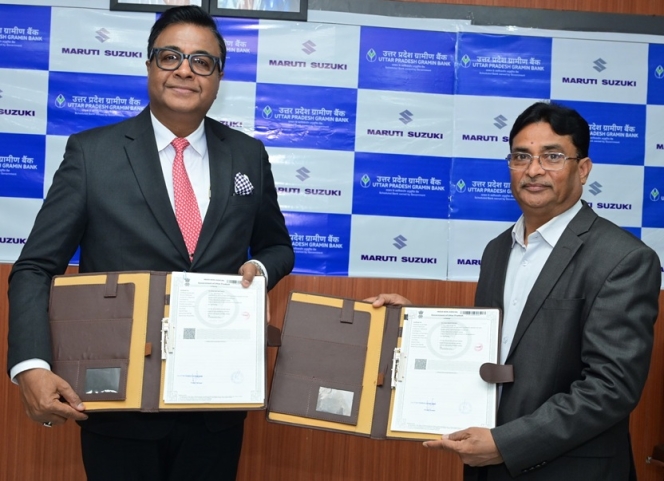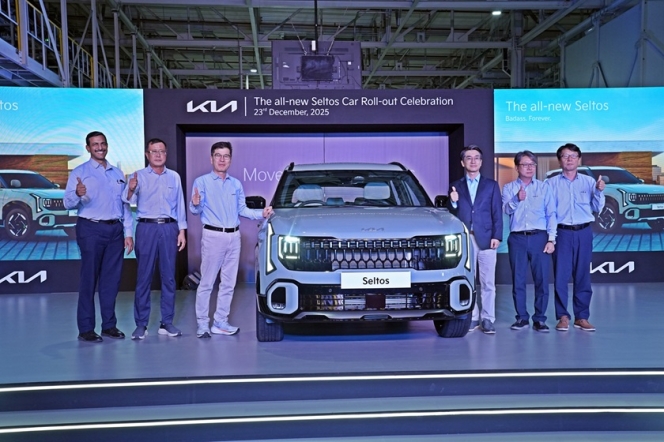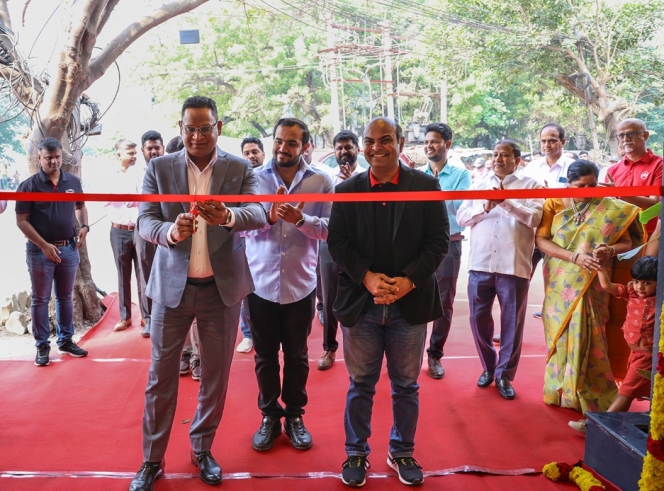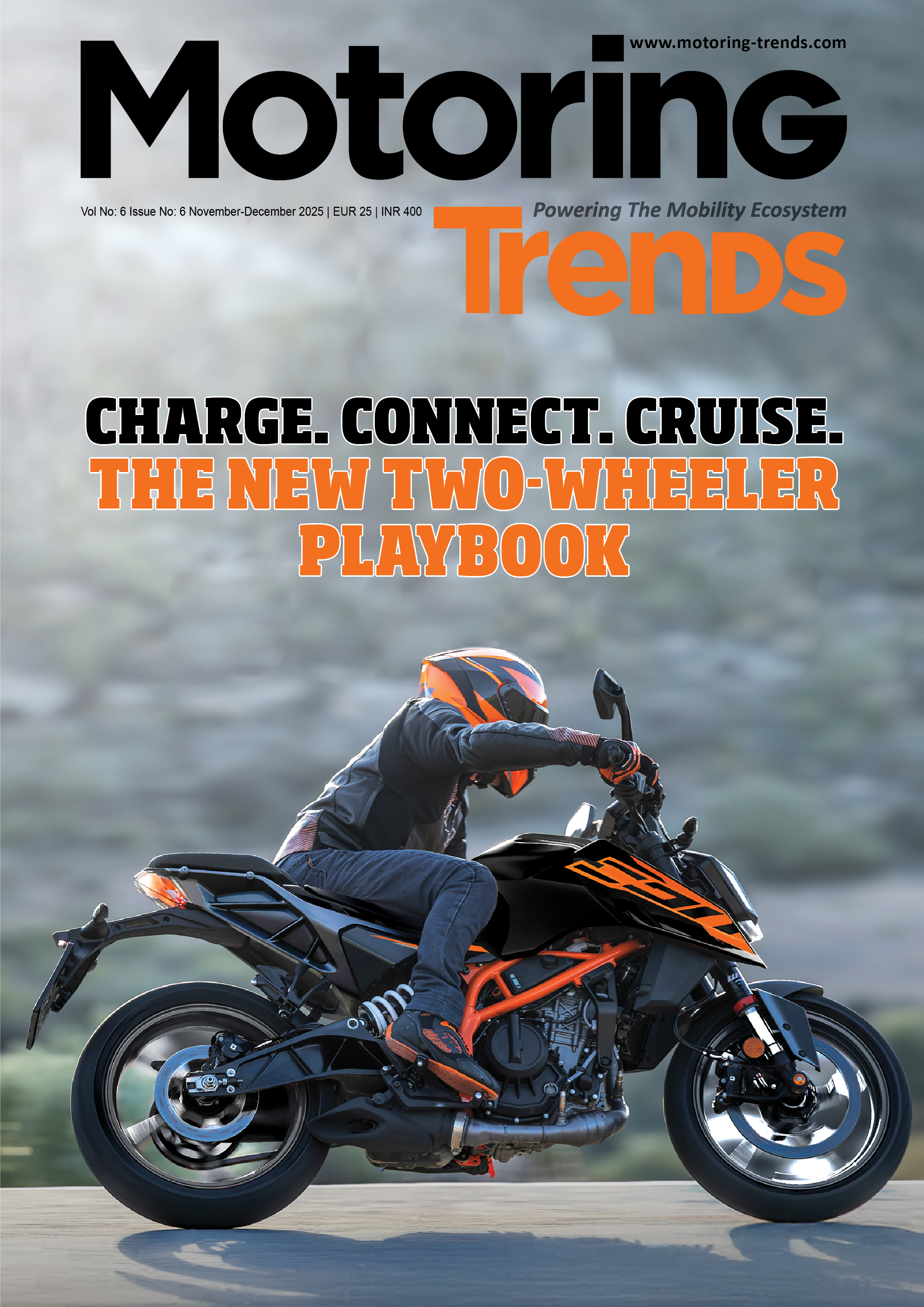OEMs Or Software Companies: Who Will Control The Data?
- By Juili Eklahare
- September 14, 2022

Software is finding a growing presence in cars today, which will eventually get upgraded over time. In fact, over the years, car manufacturers have invested millions in the R&D of automotive software. And automotive OEMs are competing with tech giants to produce operating systems for the car. Ivo Ivanov, CEO, DE-CIX International, discusses why OEMs need to be in control of the data journey of their cars, why the type of usage of the car or the special mobility packages will become more essential down the line and if there really will be a software war in the near future.
The cars of the future will be highly interconnected, and we’ll see real-time data exchange. A couple of years ago, automotive OEMs were focused on the engine, shape, the mechanical part of the car etc. However, they have now understood that the digital part of this business will drive them more successfully into the next century. There is a huge appetite for control of data by the OEMs, not just of the software but the infrastructure as well.
In fact, automotive companies have already started turning into software companies. Ivo Ivanov, CEO, DE-CIX International, mentions that automotive OEMs plan to create an independency from operating systems like iOS or android, so as to have their own software-driven platform – and this is valid for all major automotive companies, from Honda to Toyota, which is a market reality. At the same time, we also see automotive OEMs partner with companies like Google or Amazon, because of their cloud capabilities. While this sure is the case, it doesn’t tell us that the automotive OEMs will stop creating their software independency.
“If you ask me about software, I truly believe that we will see the so called ‘software war’ in the near future,” Ivanov expresses and continues, “They will collaborate if it comes to cloud resources and cloud computing resources for their manufacturing platforms. However, if it comes to creating and increasing the control of the data gateway related to the digital car, then we will definitely see a future competition between the propitiatory software developments of companies like Volkswagen, BMW etc. (you name them) and the established operating system providers like Apple or Google.”
OEMs in control of the data journey – why is it needed?
While the automotive OEMs can easily go to the software companies, it comes down to who controls this. “If the software related to the car remains in the hands of the existing players, then the OEMs will have to share a bigger portion on the assets with those companies,” Ivanov enlightens and adds, “They can share if needed, but the question remains of who has the majority in that stake. They want to increase their margin on the digital assets related to the car and become the major stakeholder in that domain.”
Ivanov further informs that, moreover, those who want to be extremely successful in the future must make themselves capable of doing this. “Because if they do not create this controllability of the data journey, they will not be able to create digital assets,” he puts across and adds, “An OEM can grow its value as a company on the stock exchange if it is able to provide the market with a story that is futuristic and can create a value in the future. And the OEMs will not be able to differentiate in the future with the quality of the car seats, engines, shape of the car etc. alone – they will be able to differentiate with smart digital concepts for mobility solutions in our digital lives.”
Citing a relevant example in this context, he asserts, “Let’s think about the metaverse, or the truly and entirely digitalised environment; we see companies like McLaren and Porsche that have already started creating their digital twins for the metaverse. It eventually comes down to access to the customers. The OEMs have the cars and the customers are the users of the cars.”
OEMs developing their own software – is it safe?
However, even companies like Tesla have their share of failures in vehicle software, with there being investigations into Tesla’s driver enhancement software following a spell of documented malfunctions. So, what can one say when it comes to smaller OEMs?
“It’s a normal process of improving your code, its security and the software. It’s what Microsoft, Apple, Google etc. have been dealing with for decades now. In fact, the OEMs will catch up much faster because they have the money to make sure that they hire efficient people and acquire other companies. And also, again, they have access to the end-users,” explains Ivanov.
Control of the data journey and infrastructure
The OEMs have the cars, the customers and the users of the car. These OEMs want to control the framework and will integrate existing solutions and other elements but want to be in control of the data journey, which is the asset. “The assets are the tonnes of data produced by the car,” Ivanov shares and goes on, “Hundreds of thousands of organisations around the world are trying to get involved in this huge and tremendous business surrounding data – the data getting into the car and the data being produced in the car. This is what the OEMs aim for.” Ivanov further clarifies that the OEMs will probably not write the code for everything from zero, but they sure will want to control the framework. “But the knowledge of where exactly the data comes from in the car and where the data goes from out of the car, then they will be able to turn themselves into the gatekeepers of the data journey and create their virtual and digital assets around this driver behaviour. And I believe that it’s not the ownership of the car in terms of legal rights of owning the car, but the type of usage or the special mobility packages that will become more essential.”
Not just software, but chips too
According to market research firm Gartner, by 2025, fifty percent of the top 10 automotive OEMs will design their own chips. Ivanov envisions that what we have seen with the battery production for electric cars, will happen in the case of chips too. “All of the dominant OEMs, from Tesla to BMW to Mercedes to Volkswagen, have already started heavily investing in their own battery manufacturing assets. In some cases, they collaborate with existing battery manufacturers, or in other cases, they create their own battery factories,” Ivanov asserts and adds, “So we see a similar development in the chip industry. That’s because the chips in the connected car and the whole mobility concept around the future of OEMs are nothing but the new engine.”
A leading position
Software is certainly transforming the automotive world. And yes, major automotive OEMs are now seriously investing in new software platforms. The software and infrastructure together, undoubtedly, will empower automotive OEMs to be the gatekeepers in this data journey and provide them with the level of controllability of the data journey that they need to create virtual and digital assets for their shareholders. Software is definitely one of the main differentiators, creating a leading position in automotive OEMs.
Citroen India Delivers 51 C3 CNG Vehicles To Luthra Group
- By MT Bureau
- December 24, 2025
Citroen India, in partnership with its dealership La Maison Nanavati, has completed the handover of 51 Citroen C3 CNG vehicles to the Luthra Group. The ceremony took place at the Luthra Group’s headquarters in Surat.
The delivery is part of Citroen's strategy to expand its presence in tier-II and tier-III markets by providing mobility solutions to businesses and individuals.
The Citroen C3 CNG is designed for high-usage environments and daily commutes. The model includes several features tailored for the Indian market, integration of a factory-fitted CNG kit to manage running costs. A suspension system tuned specifically for local road conditions. Provisions for cabin space and air-conditioning systems designed for high-ambient temperatures.
The handover to Luthra Group represents the brand's focus on cost-efficient transportation. By targeting the regional business sector, Citroen India aims to strengthen its footprint in Gujarat and the broader Indian mobility market.
The C3 CNG is positioned as a solution for users requiring reliability and low operating expenses without compromising on ride comfort.
Maruti Suzuki India Partners Uttar Pradesh Gramin Bank For Retail Financing
- By MT Bureau
- December 24, 2025

Maruti Suzuki India has signed a Memorandum of Understanding (MoU) with Uttar Pradesh Gramin Bank, a regional rural bank, for vehicle retail financing partnership on new cars, pre-owned vehicles and commercial vehicles.
This collaboration marks the 50th retail finance partner for Maruti Suzuki India. The partnership is intended to use the bank’s network to provide credit options to a range of customer profiles, particularly in rural and semi-urban regions.
The partnership aims to increase the accessibility of Maruti Suzuki products through, tailored finance schemes designed for rural and regional customers.
Partho Banerjee, Senior Executive Officer, Marketing & Sales, Maruti Suzuki India, said, “Our partnership with Uttar Pradesh Gramin Bank marks a significant milestone as we onboard our 50th retail finance partner. This reinforces our commitment to making car ownership simpler and more affordable for customers across India. By expanding our reach through this strategic alliance, we aim to empower buyers with competitive, customer-friendly financing solutions that enhance the overall purchase experience. We remain focused on delivering seamless, tailored finance options, and this collaboration strengthens our vision of providing the Joy of Mobility to aspiring Indian consumers.”
Yadav S. Thakur, Chairman, Uttar Pradesh Gramin Bank, said, “At Uttar Pradesh Gramin Bank, empowering customer aspirations is at the heart of everything we do. Our partnership with Maruti Suzuki, a leader in the automotive industry, is a strategic step towards enhancing our service offerings and delivering greater value to our customers. This collaboration aligns with our 'Customer-First' mission, enabling us to provide accessible and affordable vehicle financing solutions. We look forward to helping more individuals and families across the country realise their dream of owning a Maruti Suzuki vehicle.”
Kia India Commences Production Of New Seltos In Anantapur
- By MT Bureau
- December 23, 2025

Kia India has started production of the latest generation Seltos at its manufacturing facility in Anantapur. The company has confirmed that prices for the mid-SUV will be announced on 2 January 2026.
The Anantapur plant, established in 2019, serves as a hub for both the Indian domestic market and international exports. The facility uses automation and a local workforce to manufacture the Seltos, which was the first model produced by the company in India.
The new model is built on Kia’s K3 platform, which has been engineered to increase structural rigidity and improve suspension damping. The vehicle has grown in size compared to its predecessor to increase cabin space and stability. It has 4,460 mm of length, 1,830 mm of width and a wheelbase of 2,690 mm.
The exterior design follows the ‘Opposites United’ philosophy, featuring a ‘Digital Tiger Face,’ LED projection headlamps, and alloy wheels with neon brake callipers.
The vehicle integrates several digital interfaces and driver assistance systems. It features an upgraded Kia Connect 2.0 suite with over-the-air (OTA) software updates and a proximity unlock function.
In terms of safety, it gets 24 features as standard, while ADAS Level 2 offers 21 autonomous features to assist the driver. The Kia Seltos SUV comes with three engine options – 1.5-litre Petrol producing 115 PS of power and 144 Nm of torque, 1.5 T-GDI Petrol producing 160 PS of power and 253 Nm of torque and a 1.5-litre diesel engine producing 116 PS of power and 250 Nm of torque.
Transmission choices include a 6-speed manual (6MT), intelligent manual (6iMT), IVT, 7-speed dual-clutch (7DCT) and a 6-speed automatic (6AT). The model will be sold in four trims – HTE, HTK, HTX and GTX – with additional option variants and an X-Line styling pack.
Gwanggu Lee, Managing Director & CEO, Kia India, said, “The roll-out of the All-New Kia Seltos marks a proud milestone for Kia India. Seltos has long set benchmarks in the mid-SUV segment, and this new generation represents a bigger, bolder, and more progressive evolution shaped by insights from Indian customers. With production now underway at our Anantapur facility, our teams are fully geared to ensure customers can take delivery of their all-new Seltos without long waiting periods. We are confident the all-new Seltos will once again redefine expectations in the segment and strengthen Kia’s leadership in India."
“The new Seltos looks fantastic. The Anantapur team, together with our supplier partners, have done an outstanding job in delivering our customers a great looking, significantly bigger, technologically progressive and safe vehicle with impressive functionality and connectivity,” he said.
- Citroen India
- Jeep
- Stellantis
- Citroen 2.0
- Shailesh Hazela
- Kumar Priyesh
- Sree Venkata Teja Kethineni
- VTK Automobiles
Citroen India Opens 126th Outlet In Chennai Under Citroen 2.0 Strategy
- By MT Bureau
- December 23, 2025

Stellantis-owned French automotive brand Citroen India has inaugurated its 126th point of sales and service (POS&S) facility in Chennai, continuing the expansion of its network under the ‘Citroen 2.0 – Shift Into The New’ strategy.
The new 3S (Sales, Service and Spares) facility is located at Chitlapakkam, near Chrompet. It is an extension of the partnership with VTK Automobiles, which now operates five Citroen touchpoints in the city. The outlet functions as a ‘Stellantis Brand House,’ allowing customers to access both Citroen and Jeep brands within a single space.
Since the announcement of the Citroen 2.0 strategy, the brand has increased its network by 48.6 percent. Over the last six months, the company added 43 points of sale through its network expansion programmes. Citroen expects to reach a total of 135 outlets by the end of the year, with further operations planned for the north, west, and east of India.
The strategy focuses on several pillars – deepening the domestic supply chain for India-centric products. Expanding the dealer footprint into Tier 2 and Tier 3 locations. Using digital tools and unified spaces for sales and aftersales services.
Shailesh Hazela, CEO and Managing Director, Stellantis India, said, “The expansion of Stellantis network further with VTK dealership in Chennai marks another important step in Citroen and Jeep India’s network growth strategy. Chennai is a key market for us, and this upgraded facility will enable us to serve our customers better with a seamless sales and ownership experience. Aligned with our Citroen 2.0 strategy, we remain committed to strengthening our dealer partnerships and building a robust, customer-centric network across the country.”
Kumar Priyesh, Director Automotive Brands, Stellantis India, said, “We have grown our network by almost 48.6 percent since we announced the Citroen 2.0 strategy and have been able to expand our operations in different parts of country: adding tier 2/3 locations while further strengthening in Metro/ Tier 1 cities. Through project Visitar, Network Expansion Program and expansion in new geographies we added over 43 POS in the last 6 months and are already in advanced stages to start additional operations in North, West and Eastern parts of the country and expected to close the year with 135 POS for Citroen.”
Sree Venkata Teja Kethineni, Dealer Principal, VTK Automobiles, said, “We’re happy to partner to this pivotal shift in automotive retail, proudly representing Jeep and Citroen. Our dual-brand strategy empowers us to deliver a truly elevated and distinctive experience – whether customers seek rugged performance or refined sophistication. With passion, professionalism and personalised care at the core, our team is committed to exceeding expectations and upholding the global standards these iconic brands represent.”
The facility includes a service centre equipped with diagnostics and digital tools. Staff members are trained across both Jeep and Citroen product lines to provide technical support and product information.






Comments (0)
ADD COMMENT